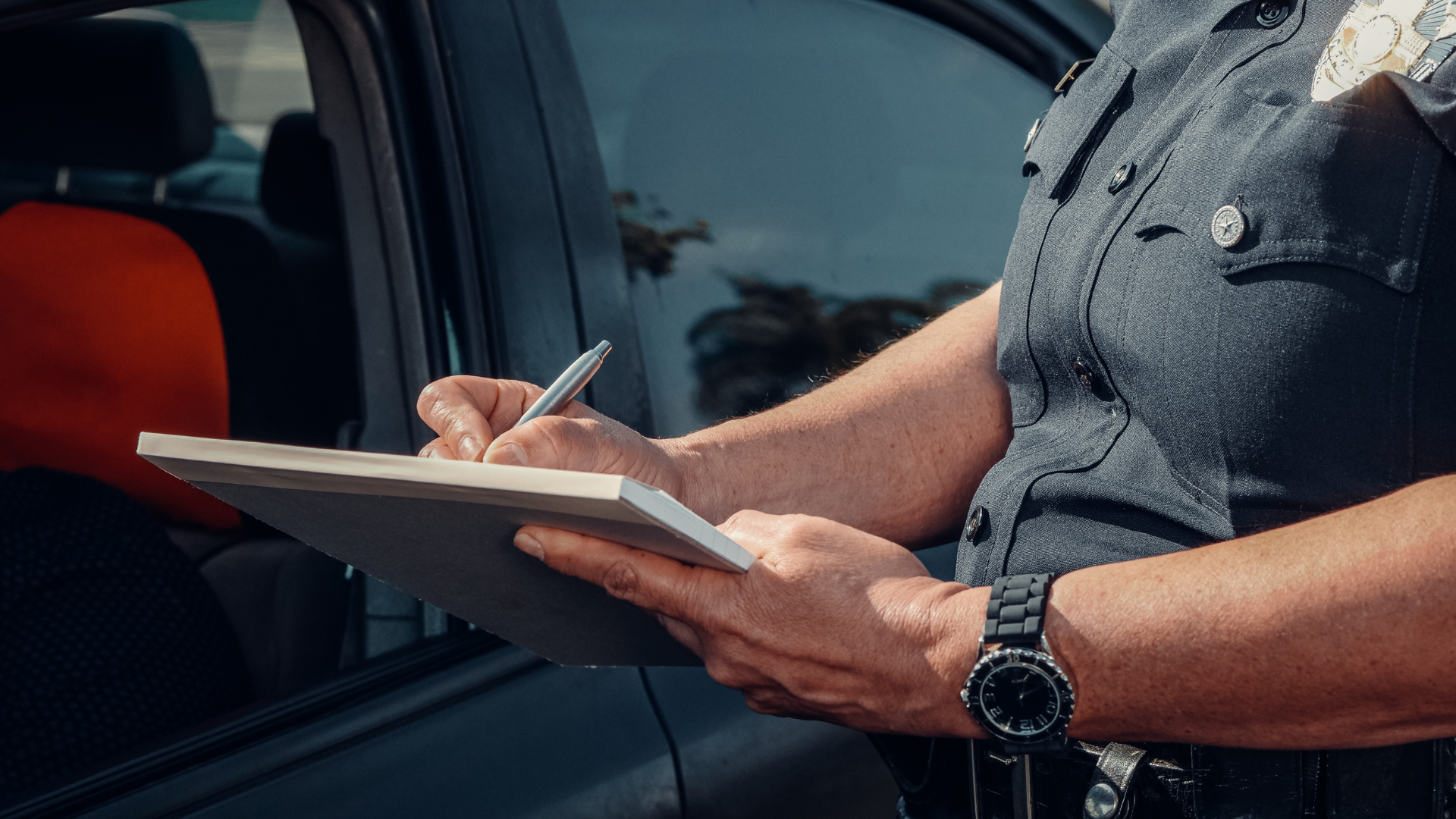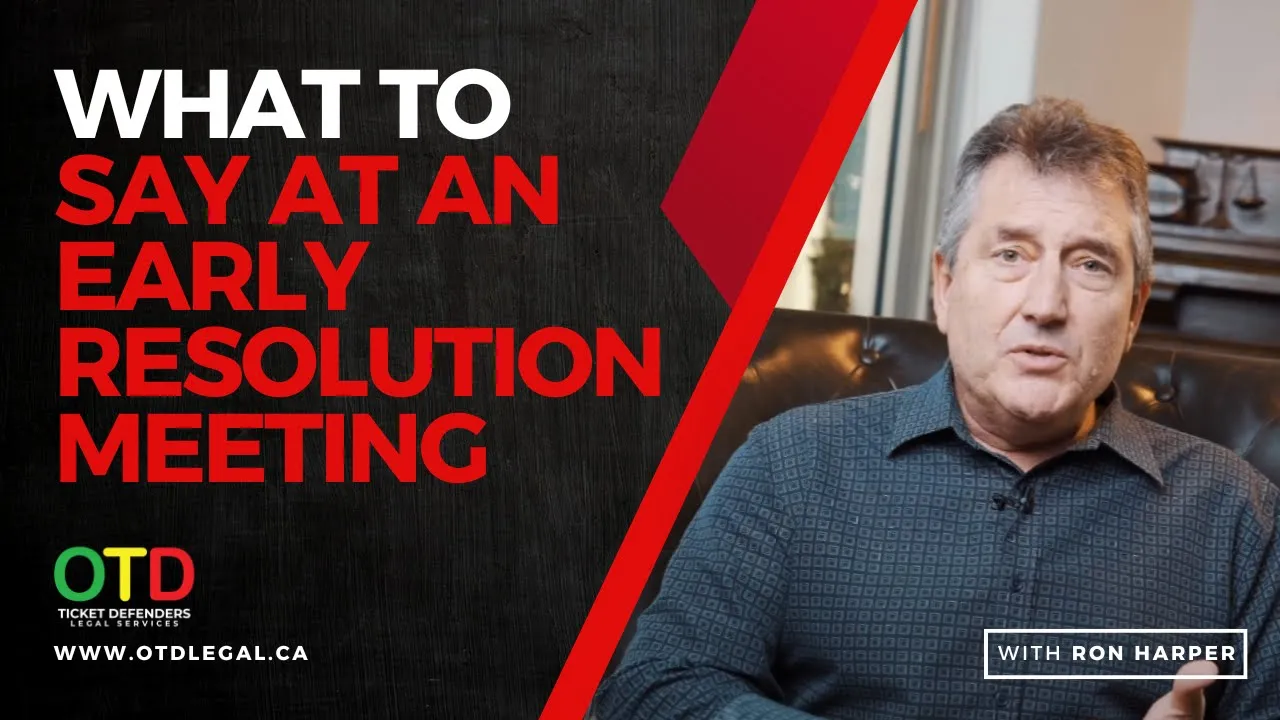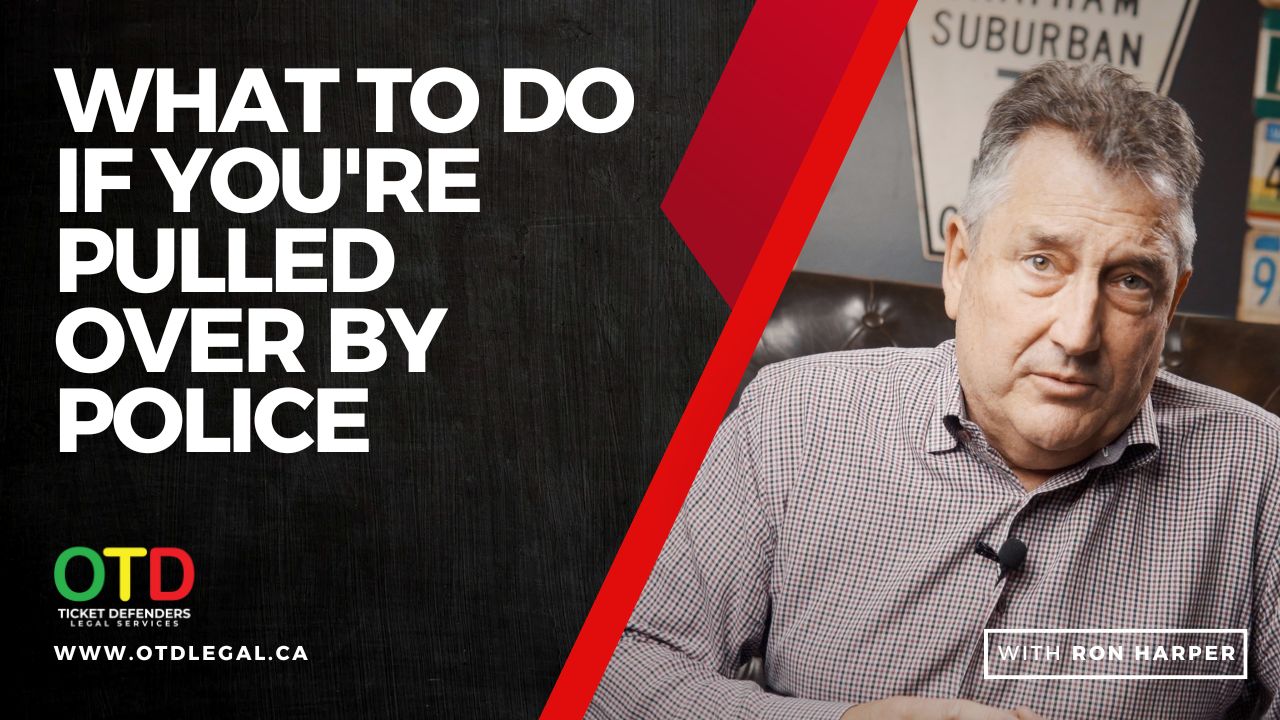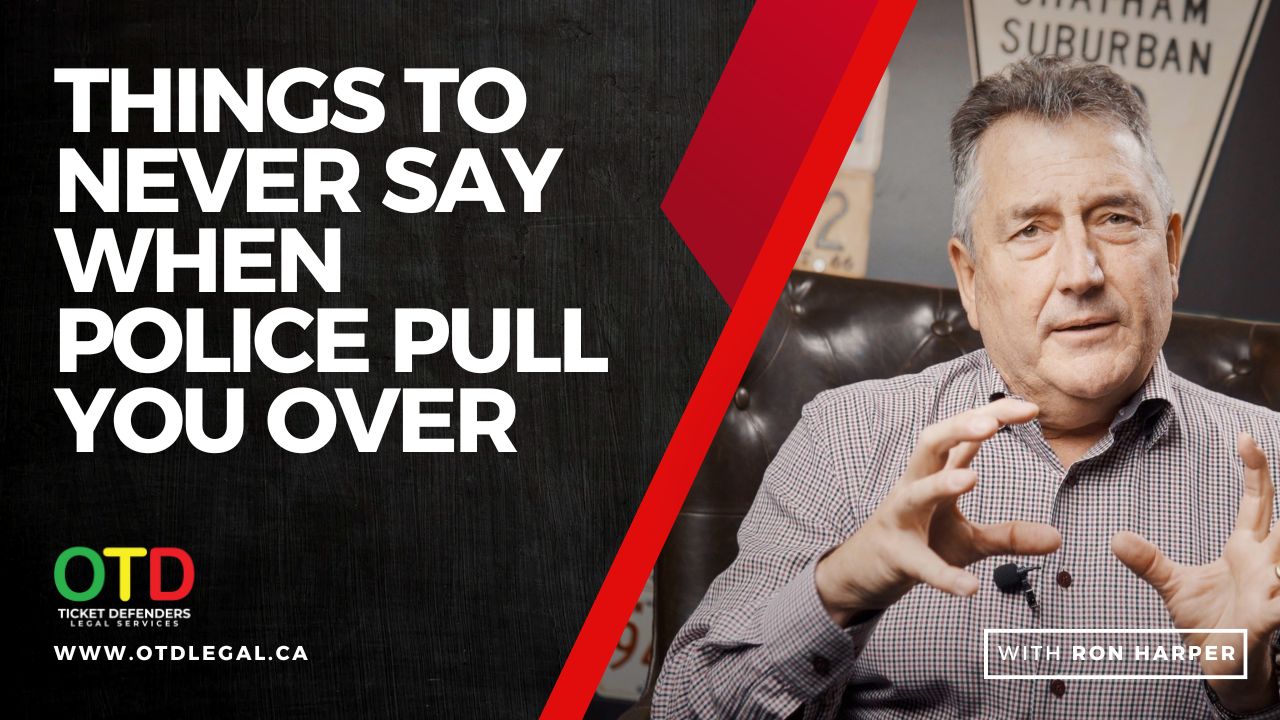Vehicle light requirements. Most people in Ontario don’t think about this when they slide behind the steering wheel, turn on their ignition, and hit the road. The news is generally filled with much more exciting traffic violations like stunt driving offences or major collisions that have resulted in charges like careless driving. However, one of the regular duties of the OPP or municipal police forces is to ensure that vehicles have and use proper lighting. Vehicle lights ensure that vehicles can be seen by pedestrians and other drivers. Vehicle lights such as headlights also ensure that you can see where you’re going. Vehicle lights such as turn signals also ensure that others know when you’re changing lanes or making a turn.
It makes sense in this context about why vehicle light requirements are an important part of the law. Without them and their proper use, there could be certainly be a lot more collisions as well as property damage and injuries or death. If you’ve been charged by the police with a ticket or summons, you’ll need to know what you’ve been charged with and what you can do to protect your rights at court. The easiest way to do so is to submit an online consultation request and one of our staff will contact you to assist you. This week we’re going to take a Q&A look at some of Ontario’s laws surrounding vehicle light requirements.
Let’s take a look!
WHAT ARE THE BASIC VEHICLE LIGHT REQUIREMENTS?
For all vehicles, other than motorcycles, the basic vehicle light requirements are defined under section 62(1) of Ontario’s Highway Traffic Act (HTA) as follows:
Lamps required on all motor vehicles except motorcycles
62 (1) When on a highway at any time from one-half hour before sunset to one-half hour after sunrise and at any other time when, due to insufficient light or unfavourable atmospheric conditions, persons and vehicles on the highway are not clearly discernible at a distance of 150 metres or less, every motor vehicle other than a motorcycle shall carry three lighted lamps in a conspicuous position, one on each side of the front of the vehicle which shall display a white or amber light only, and one on the rear of the vehicle which shall display a red light only. R.S.O. 1990, c. H.8, s. 62 (1).
Let’s break this rather wordy sentence into something more readily understandable. There are two main things that we need to understand. What lights are required? When Do I have to use them?
WHAT LIGHTS ARE REQUIRED?
HTA s.62(1) states that 3 lights are required:
- A white or amber light on the front-left of the vehicle
- A white or amber light or the front-right of the vehicle
- A red light on the rear of the vehicle
WHEN DO I NEED TO USE THOSE LIGHTS?
HTA s.62(1) states that those lights must be used:
- By at least 30 minutes before sunset
- Until at least 30 minutes after sunrise, or,
- When “insufficient light or unfavourable atmospheric conditions” results in people or vehicles not being clearly discernible within 150 meters.
What Are The Identification Light Requirements For A Commercial Motor Vehicle?
Commercial motor vehicles and public vehicles have specific requirements regarding identification lights. These requirements are detailed under Highway Traffic Act section 62(11):
Identification lamps
(11) When on a highway at any time from one-half hour before sunset to one-half hour after sunrise and at any other time when, due to insufficient light or unfavourable atmospheric conditions, persons and vehicles on the highway are not clearly discernible at a distance of 150 metres or less, every commercial motor vehicle or combination of a commercial motor vehicle and a trailer having a length in excess of 9.2 metres or a width in excess of 2.05 metres shall carry three lighted lamps displaying green or amber lights at the front, except in the case of a public vehicle which shall display amber lights at the front, and three lighted lamps displaying red lights at the rear, and the lights of each colour shall be evenly placed not less than 150 millimetres nor more than 310 millimetres apart along a horizontal line as near the top of the commercial motor vehicle or combination of a commercial motor vehicle and a trailer as the permanent structure permits, and shall be visible for distances of 150 metres from the front and rear respectively of the commercial motor vehicle or combination of a commercial motor vehicle and a trailer. R.S.O. 1990, c. H.8, s. 62 (11).
Like many other sections of the Highway Traffic Act dealing with vehicle lights, commercial motor vehicles and public vehicles are required to use their identification lights:
- By at least a half hour before sunset
- Until at least a half hour after sunrise, and,
- When “insufficient light or unfavourable atmospheric conditions” results in people or vehicles not being clearly discernible within 150 meters.
Commercial motor vehicles included in this section are:
- A commercial motor vehicle longer than 9.2 meters or wider than 2.05 meters
- A commercial motor vehicle and trailer longer than 9.2 meters or wider than 2.05 meters
These commercial motor vehicles are required to have:
- Three green or amber lights at the front of the vehicle (public vehicles must use amber lights)
- Three red lights at the rear of the vehicle
These lights must be placed in a horizontal line near the top of the vehicle in such a way as to be:
- Not less than 150 mm apart
- Not more than 310 mm apart
The identification lights must be visible within at least 150 meters.
Is There An Identification Light Exemption If I’m Not Hauling A Trailer?
Yes. Under Highway Traffic Act section 62(12) a truck tractor driven without a trailer or semi-trailer is not required to display the three red identification lights on the rear of the vehicle:
Rear identification lamps on tractor without trailer
(12) Despite subsection (11), a truck tractor driven on a highway without a trailer or semi-trailer is not required to carry the three red lamps displaying red lights to the rear. R.S.O. 1990, c. H.8, s. 62 (12).
What Are The Light Requirements For A Motorcycle?
The basic vehicle light requirements for a motorcycle are less than those for other vehicles. These requirements are detailed under Highway Traffic Act section 62(2) as follows:
Lamps required on motorcycles
(2) Subject to subsection (3), when on a highway at any time every motorcycle shall carry two lighted lamps in a conspicuous position, one on the front of the vehicle which shall display a white light only, and one on the rear of the vehicle which shall display a red light only. R.S.O. 1990, c. H.8, s. 62 (2).
Let’s unpack this definition into the same two questions. What lights are required? When do I need to use them?
What Lights Are Required?
HTA s.62(2) states that only two lights are required for a motorcycle:
- A white light on the front
- A red light on the rear
When Do I Need To Use These Lights?
HTA s.62(2) states that a motorcycle must use those lights “any time” that the vehicle is being driven. Day or night, those lights need to be used or you risk being charged by the police.
Do Light Requirements Change If My Motorcycle Has A Side Car?
Yes. These requirements are similar to those of a regular car and are detailed under Highway Traffic Act section 62(3):
(3) When on a highway at any time every motorcycle with a side car shall carry a lighted lamp in a conspicuous position on each side of the front of the vehicle which lamps shall display a white or amber light only and a lighted lamp on the rear of the vehicle which shall display a red light only. R.S.O. 1990, c. H.8, s. 62 (3).
What Lights Are Required?
HTA s.62(3) states that 3 lights are required for a motorcycle with a side car:
- A white or amber light on the front-left of the vehicle
- A white or amber light or the front-right of the vehicle
- A red light on the rear of the vehicle
WHEN DO I NEED TO USE THOSE LIGHTS?
HTA s.62(3) states that a motorcycle with a side car must use those lights “any time” that it is being driven. Just like a motorcycle without a sidecar, if you’re driving it….day or night…you need to have those lights on.
HOW VISIBLE DO MY VEHICLE LIGHTS NEED TO BE?
Regardless of the type of vehicle being driven, Highway Traffic Act section 62(4) states that vehicle lights must be clearly visible from a distance of at least 150 meters when active:
Light requirement
(4) Any lamp required under subsection (1), (2) or (3) shall, when lighted, be clearly visible at a distance of at least 150 metres from the front or rear, as the case may be. R.S.O. 1990, c. H.8, s. 62 (4).
Keep in mind that this section of law is how visible you are to other to other drivers and pedestrians.
ARE THERE ANY VEHICLE LIGHT EXEMPTIONS FOR OLDER MOTOR CYCLES?
Yes. Highway Traffic Act section 62(5) has an exemption for older motorcycles (with or without a sidecar) that were manufactured before January 1, 1970:
Exception
(5) Despite subsections (2) and (3), where a motorcycle that was manufactured prior to the 1st day of January, 1970 is operated on a highway, the lighted lamps required under subsections (2) and (3) shall be required only during the period from one-half hour before sunset to one-half hour after sunrise, or at any other time when, due to insufficient light or unfavourable atmospheric conditions, persons and vehicles on the highway are not clearly discernible at a distance of 150 metres or less. R.S.O. 1990, c. H.8, s. 62 (5).
The same light requirements remain as for more modern motorcycles with or without a side car. The exception is in the times during which the lights must be active. Where as more modern motorcycles must always use their lights when being ridden, older motorcycles are only required to use them:
- From at least 30 minutes before sunset
- Until at least 30 minutes after sunrise, or,
- When “insufficient light or unfavourable atmospheric conditions” results in people or vehicles not being clearly discernible within 150 meters.
HOW BRIGHT DO MY HEADLIGHTS NEED TO BE?
The previous sections have dealt with ensuring that you are visible to other drivers or pedestrians. Highway Traffic Act section 62(6) deals with how well you can see other drivers and pedestrians:
Strength of lamps
(6) Lamps on the front of a motor vehicle shall be so constructed, located, arranged and adjusted that when lighted as required by subsections (1), (2) and (3) they produce under normal atmospheric conditions and on a level road a driving light sufficient to render clearly discernible to the operator of the motor vehicle any person or vehicle on the highway within a distance of 110 metres ahead of the motor vehicle. R.S.O. 1990, c. H.8, s. 62 (6).
Whether you are driving a car or a motorcycle, your headlights need to be bright enough that “under normal atmospheric conditions and on a level road” you can see other vehicles and pedestrians within at least 110 meters.
CAN I MODIFY MY HEADLIGHTS?
Be careful here as doing so can get you into trouble with the law. Highway Traffic Act section 62(7) describes what modifications are prohibited:
Attachment that affects lamps prohibited
(7) No person shall drive upon a highway a motor vehicle if either or both of the lamps that are required on the front of the vehicle by subsections (1), (2) and (3),
(a) are coated or covered with a coloured material; or
(b) have been modified by the attachment to the lamps or the motor vehicle of any device that reduces the effective area of the lenses or the intensity of the beam of the lamps. 2002, c. 18, Sched. P, s. 19 (1).
This section prohibits headlights from being altered in the following three ways:
- A coloured coating or covering material
- A modification that reduces the effective area of the headlight
- A modification that reduces the intensity of the headlight
If the modification does any of this, it is best to steer clear of doing so for your own safety and to prevent being charged by the police.
ARE THERE ANY EXCEPTIONS TO RESTRICTIONS ON HEADLIGHT MODIFICATIONS?
Yes. But they certainly aren’t straight forward. Highway Traffic Act section 62(7.1) provides the following exception:
Exception
(7.1) Clause (7) (a) does not apply if the lamps are of the prescribed type or meet the prescribed standards. 2002, c. 18, Sched. P, s. 19 (1).
This exception applies to HTA s.62(7)(a)’s prohibition against modifications that alter the colour of the light. The lamps would still need to meet all other legal requirements and restrictions under the law.
WHAT CAN I DO IF I’M CHARGED BY THE POLICE?
Who knew that there were so many laws surrounding vehicles and lights? We’ve only begun to answer some of the important questions that you need answers to on the subject. Make sure to read next week’s article where we’ll look at even more of these issues.
Hopefully this information prevents you from getting into trouble with the law. As the old saying goes: an ounce of prevention is worth a pound of cure. However, if you have been charged by the police, our team is here to assist you. Generally we can review a situation in as little as 5 to 10 minutes over the telephone with you. A few minutes on the telephone can help ensure that you are making informed decisions and avoiding legal missteps that could impact your license and insurance rates, as well as result in court penalties.
Hiring a paralegal is generally the most cost-effective way to defend matters before the court. Doing so, also takes the stress and worry out of what legal work has to be done and by what deadlines. Most of the matters that we help our clients with can be resolved without them ever having to step foot in a court room or ever file a legal document. That’s what we’re here to do for you. Get A Free Consultation Here
Do You Need To Defend Yourself Against An Ontario Traffic Ticket?
If you need to defend your driving rights against an Ontario traffic ticket you should contact us as soon as possible. We have skill and experience in helping drivers just like you respond to a variety of traffic tickets and provide free, confidential consultations to empower you to fight your charges. We help drivers throughout Ontario including Cambridge, Georgetown, London, Windsor and from our home office in Kitchener. Contact us online or call us directly at 1.844.647.6869 or text us a copy of your ticket to 226-240-2480.







